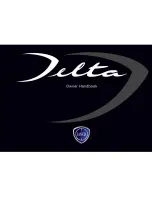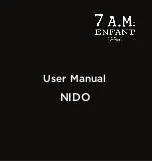
RAD-Star User’s Guide
3
© 2015-2016 Intrepid Control Systems, Inc.
Version 1.2 - June 1, 2016
AE
Device
Device
to PC
RAD-Star
PC
PC to
Device
Figure 2: Using the RAD-Star as a Media Converter.
Connecting just one Automotive Ethernet device to the RAD-Star
creates a simpler network that allows a PC or other standard Ethernet hardware to interact with it.
Timestamping and Frame Wrapping
The RAD-Star records the time that each message is received on one of its BroadR-Reach
ports. This hardware-level timestamp is then transmitted in a special
wrapper frame
over its
conventional Ethernet links, encapsulating the original message. The wrapper frame contains
its own Ethernet header and
Frame Check Sequence
(
FCS
) field, along with an extra header
containing information specific to the RAD-Star. The wrapper is described further in Section
Ethernet controllers normally discard any frames received for which an error has been
detected, and strip the FCS error-detection field even on valid frames. The RAD-Star’s special
wrapping mechanism allows it to capture BroadR-Reach frames in their entirety, including
the FCS field, and ensures that error frames are preserved so they can be analyzed. (Note,
however, that undersized/runt frames will not be captured.)
Features
Here are some of the noteworthy features of the RAD-Star:
•
Custom XMOS BroadR-Reach active tap
•
Support for active tap and media converter operation
•
Two SMSC 8710A conventional 10/100 Ethernet PHYs
•
Two BroadCom BCM89810 BroadR-Reach (100BASE-T1) PHYs
•
Standard RJ-45 jacks for 10/100 Ethernet connections with link and activity LEDs
•
Molex Mini50 jacks for Automotive Ethernet connections with combination link/activity
LEDs
•
DC power input via standard DB-9 CAN connector
•
Full-duplex support for simultaneous data transmission and reception across all PHYs
•
Compact, portable enclosure
•
Fast boot time: forwarding of BroadR-Reach packets on active tap within 120 ms,
transmission of tapped packets over standard Ethernet within 2.5 seconds.







































